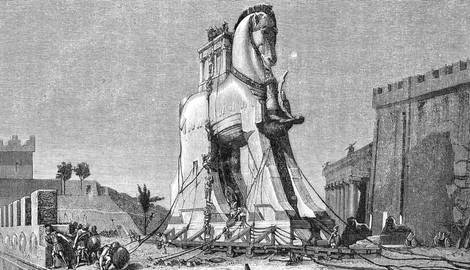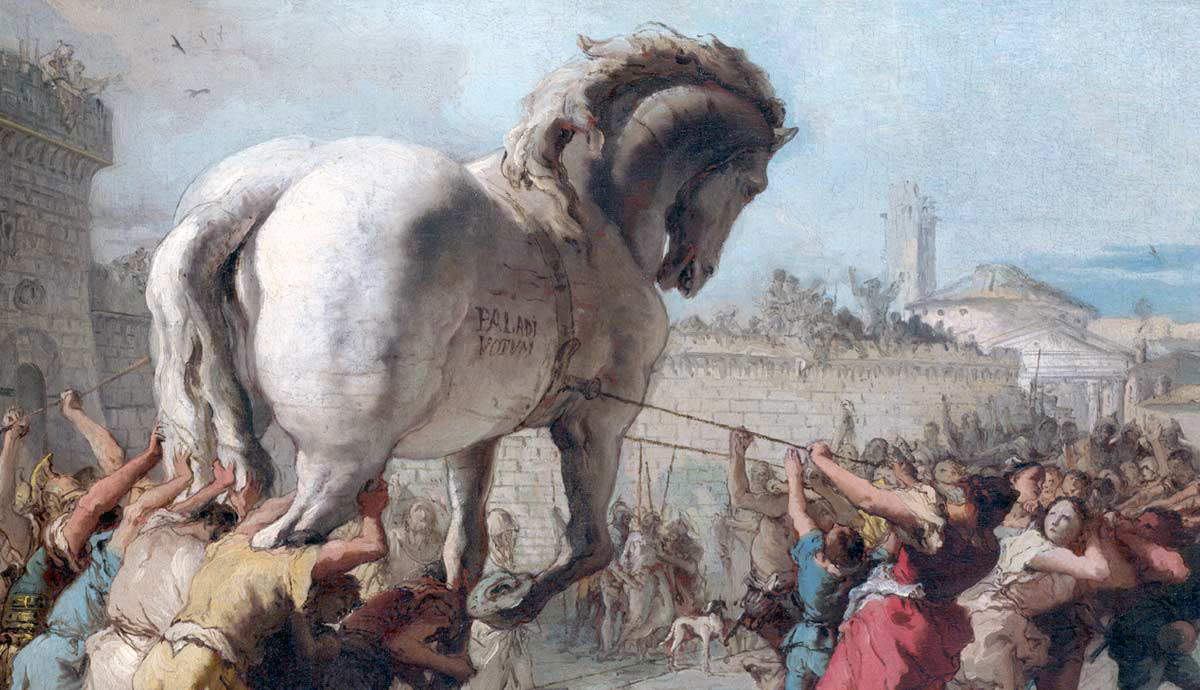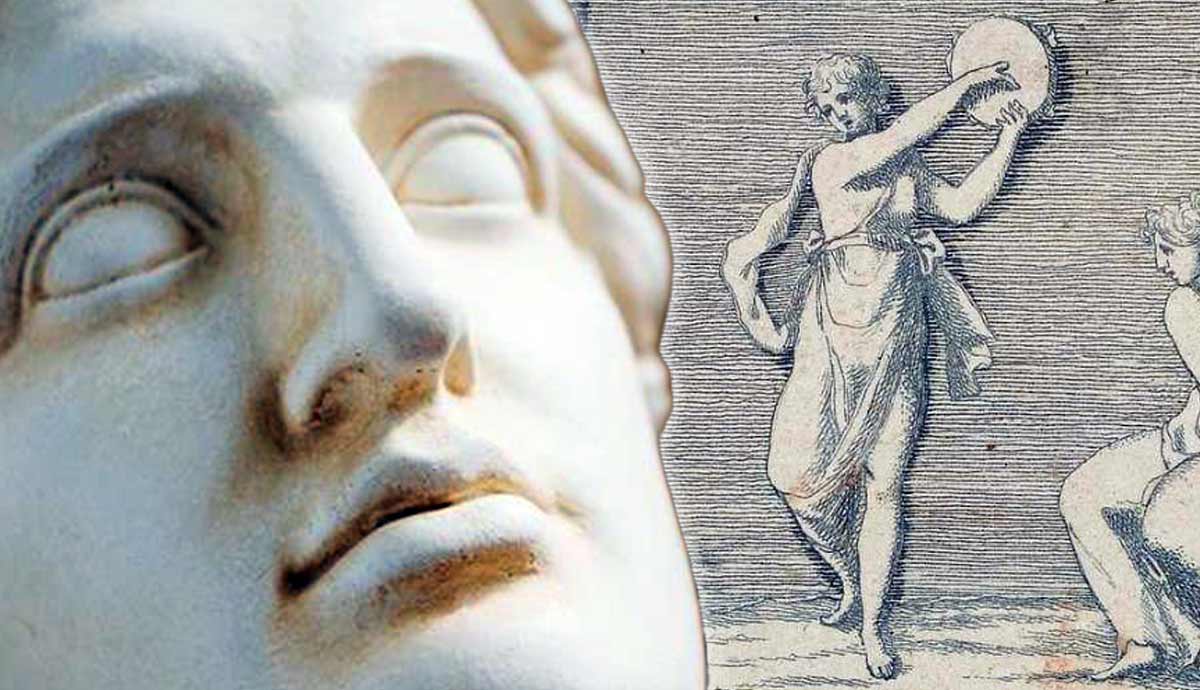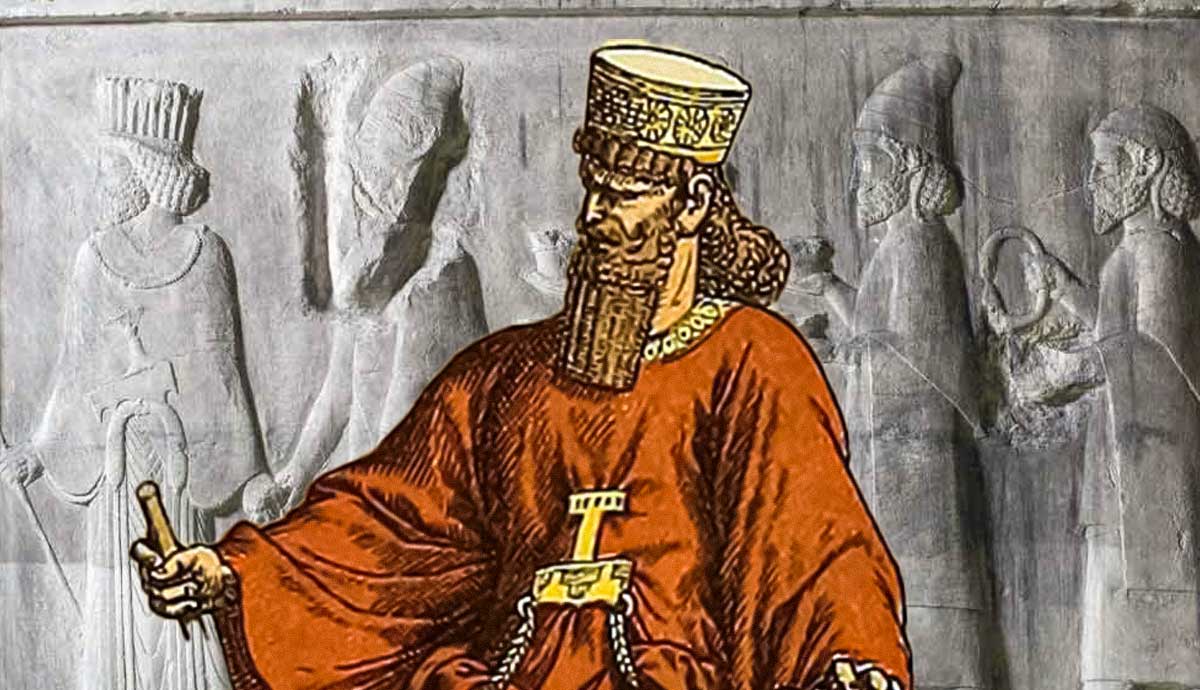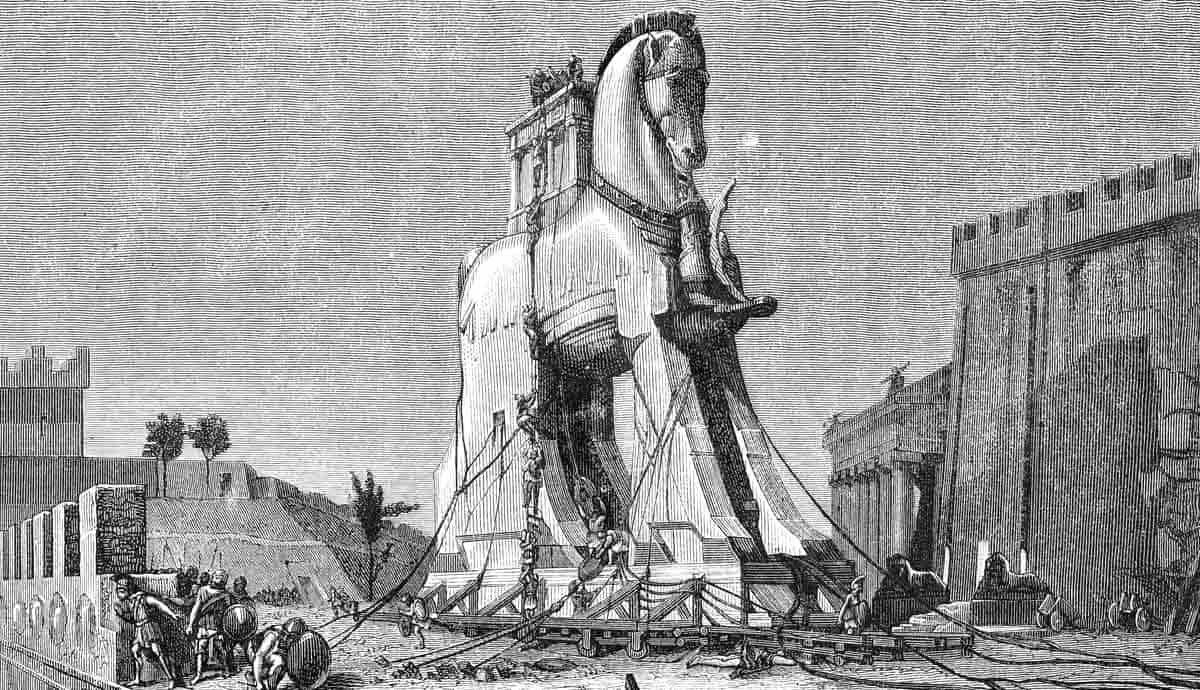
Arguably, one of the most famous aspects of the Trojan War is the story of how it ended. This story famously involved the incredible deception of the Trojan Horse. According to this ancient legend, the Trojan Horse was used by the Greeks to end a grueling ten-year siege of the city of Troy. It involved the construction of a massive hollow statue of a horse with space for Greek soldiers to hide inside. The Trojans brought the Trojan Horse inside their city, not realizing the hidden threat. This scheme allowed the Greeks to win the war and raze Troy to the ground.
The Earliest Record of the Trojan Horse

We cannot know with absolute certainty what the earliest trace of the Trojan Horse really is. Many people might assume that Homer’s description of the horse in the Odyssey is the earliest appearance of it. However, there is good reason to believe that the Odyssey was actually written in c. 650 BCE or even a little later. In contrast, the Mykonos Vase has been dated by archaeologists to c. 675 BCE. This provides a clear, unambiguous depiction of the Trojan Horse. It shows a large horse statue with wheels on its feet and various windows over its body. In these windows, soldiers can be seen. Other soldiers stand on the ground around it.
Even before this, there is what appears to be a depiction of the Trojan Horse on a bronze bow fibula, believed to be from Grecian Thebes. This is believed to date to approximately 700 BCE. Although it is not intact, part of what appears to be a horse statue on wheels can be seen on the edge of this object. It is similar to the depiction of the Trojan Horse on the Mykonos Vase. Hence, this is very likely the earliest surviving depiction of the Trojan Horse.
Homer’s Trojan Horse

The most famous early appearance of the Trojan Horse in the Greek world comes from Homer’s Odyssey, probably written just after 650 BCE. One basis for this date is related to the fact that Greek pottery shows various scenes from the Trojan War throughout the 7th century BCE. Crucially, it is only in c. 625 BCE that we see scenes that are definitely from the Iliad depicted on pottery. This suggests that it was not written long before then, and the Odyssey is generally agreed to have been written after the Iliad. There is no mention of the Trojan Horse in the Iliad.
The Odyssey tells the story of the aftermath of the Trojan War, but there are two references to how the Trojan War ended by means of deception. In one part, Menelaus explains that Odysseus was the one who devised the clever idea of the Trojan Horse to deceive the Trojans and win the war. The passage in question is not very long and detailed. However, it does provide a clear overview of the basic story.

Menelaus stated:
“with my eyes I’ve never seen such a one as was the dear heart of steadfast Odysseus.
What a thing this was, that a mighty man dared to do and did
inside the polished horse, where we, all the best of the Argives,
sat bearing death and doom for Trojans.”
In another passage, Odysseus tells someone to:
“sing the artifice of the Wooden Horse,
that Epeius made with the help of Athena,
that divine Odysseus once brought, as a trap, to the acropolis,
and filled with men who ravaged Ilium.”
The singer then sang how some Greeks had left in their ships while others had sat hidden in the wooden horse with Odysseus. The Trojans then pulled the horse inside and discussed what to do with it. Before they could decide, the Greeks poured out of the horse and sacked the city. This passage does not specifically mention that this occurred at night, but practical considerations make this seem logical.
The Trojan Horse in Virgil’s Aeneid

While Homer provides a reasonable amount of detail, the most famous narrative of the Trojan Horse comes from the Aeneid. This was written by the Roman poet Virgil in the 1st century BCE and was commissioned by the emperor Augustus. It tells the story of Aeneas, a Trojan prince, on his journey from Troy to Italy after the Trojan War. While not focusing on the Trojan War itself, it does reveal what happened during the final part of that event.
Virgil provides many details that were not included in Homer’s narrative. According to this later account, the soldiers inside the Trojan Horse were chosen by lot. The horse itself is presented as if it were a votive offering to the gods. The Trojans, thinking that they have won the war and the Greeks have sailed away, decide to pull the horse into their city. To do so, they perform the great strategic blunder of tearing down a section of their city’s defenses, evidently because the horse will not fit through the gate.

After this, the Trojans engage in considerable rejoicing. They are absolutely jubilant over their apparent victory. Virgil describes how young boys and girls sang sacred songs in the city. The inhabitants clothe the temples of their gods with festive branches. The Trojan Horse is placed right at the top of the citadel. Yet, not everyone is deceived. The Aeneid specifically mentions that Cassandra knew by divine assistance what was going to happen. However, the gods prevented her from being believed by others. After this joyful celebration, night fell. In describing the ensuing chaos, Virgil wrote:
“They invade the city that’s drowned in sleep and wine,
kill the watchmen, welcome their comrades
at the open gates, and link their clandestine ranks.“
The rest of the Greek army had been hiding at the nearby island of Tenedos. They arrived and finished off the city, killing Troy’s inhabitants and burning the city to the ground. Thus ended the Trojan War.
How the Trojan Horse Became a Symbol of Deception

The story of the Trojan Horse was famous in the ancient world just as it is famous today. The very fact that it appears in some of the earliest depictions of the Trojan War, as we have seen, demonstrates this. The Odyssey and the Aeneid are some of the most famous works of ancient literature. No wonder, then, that the Trojan Horse has become a symbol of deception.
Today, a “Trojan Horse” is an expression that refers to something that appears beneficial or harmless but which actually contains a hidden threat. It can be used in a great variety of contexts. The expression is often seen in the world of politics as a metaphorical reference to what the ancient Greeks did. Outside of politics, it is most commonly seen in the world of technology. In this context, a Trojan horse might be a file in an email that supposedly comes from a trusted website, but which actually contains a virus.
The Origins of the Trojan Horse

What was the historical origin of the Trojan Horse? Does it even have a historical origin? There are a few different ideas regarding this. One popular idea is that the word “horse” is actually a mistranslation of the word for “ship.” However, given that Homer specifically makes a contrast between most of the Greeks living in their ships and the soldiers hiding in the horse, this is unlikely. The idea that it refers to a group of soldiers arriving in a ship completely ignores the issue of how this was supposed to have been a deception to end the war.
A more plausible idea is that it came from distorted reports of an ancient siege engine. This idea goes back to ancient times. Assyrian battering rams were apparently covered in damp horse hides to prevent them from fire damage. However, there is no coherent explanation for why the Greeks would have been using an Assyrian battering ram. No explanation yet offered seems more plausible than that the Trojan Horse was simply what Homer claimed it was.
The History of the Trojan Horse

In summary, the Trojan Horse was the deception that ended the ten-year-long war between the Greeks and the Trojans. It was Odysseus who came up with the plan. He got the Greeks to construct a massive wooden statue of a horse and pretend that it was a votive offering for the gods, left outside Troy. The Trojans, believing that the Greeks had left, brought the statue inside their city. In doing so, they tore down part of the wall. At night, the Greek soldiers climbed out of the horse, killed Troy’s watchmen, and then the rest of the army returned. With this clever scheme, the Greeks won the war and burned Troy to the ground.
This scheme involving the Trojan Horse was famous from an early period. It appears in some of the very earliest depictions of the Trojan War on Ancient Greek artifacts. It has continued to be famous down to this day, even being used as an expression to refer to that specific type of deception.
